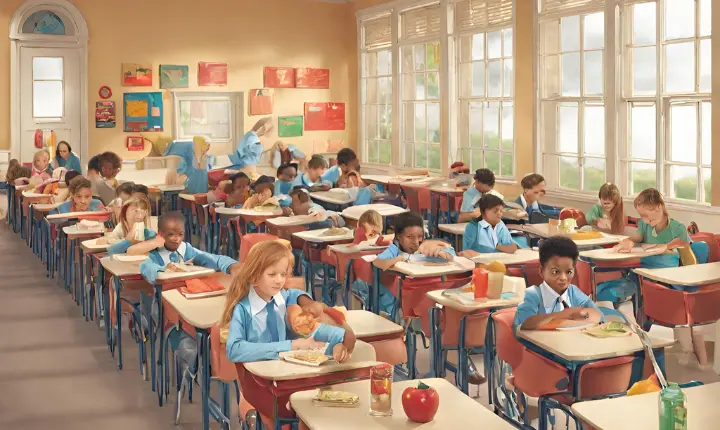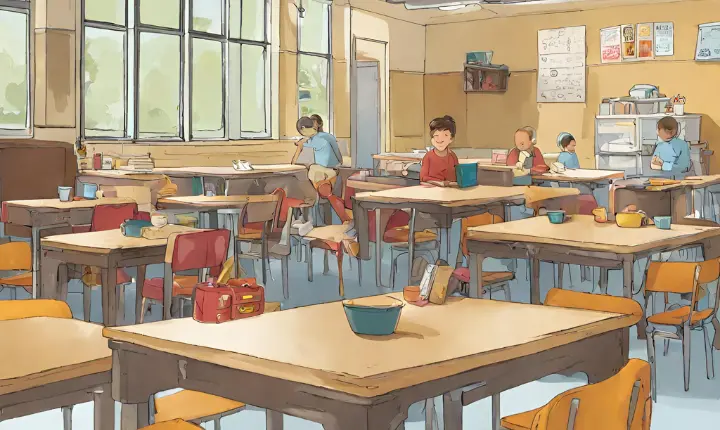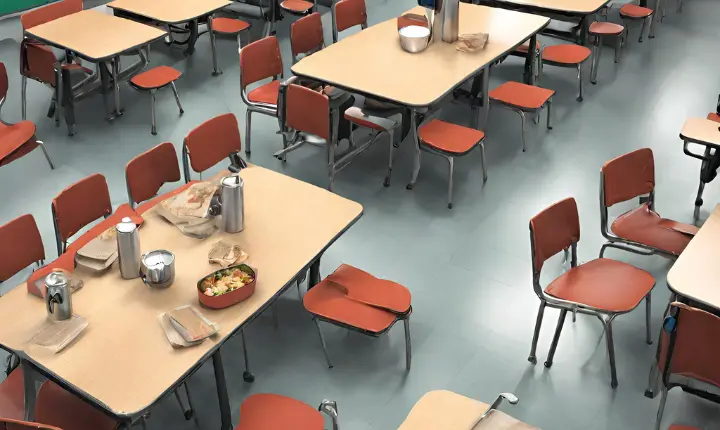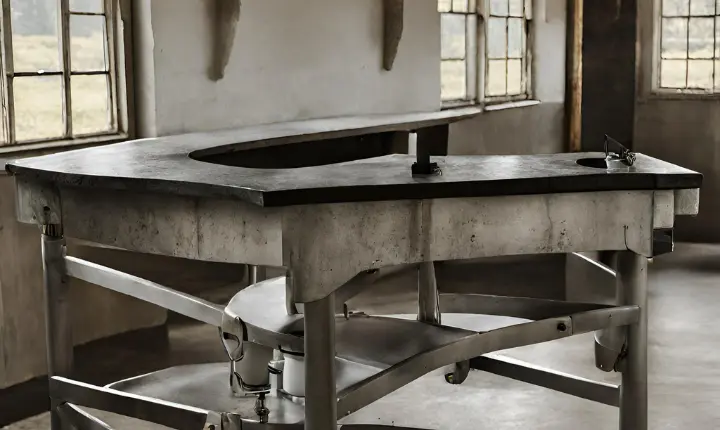Lunch Tables in Schools
School lunchtime is not just about nourishing the body; it’s also an essential time for socializing, building friendships, and fostering a sense of community. One often overlooked aspect of this daily ritual is the lunch table. The layout and design of lunch tables in schools play a crucial role in shaping the social dynamics among…
School lunchtime is not just about nourishing the body; it’s also an essential time for socializing, building friendships, and fostering a sense of community. One often overlooked aspect of this daily ritual is the lunch table. The layout and design of lunch tables in schools play a crucial role in shaping the social dynamics among students. In this article, we will explore the significance of lunch tables and how they contribute to creating inclusive and positive environments within academy campuses.
Promoting Inclusivity:

The layout of lunch tables can significantly impact students’ social interactions. When schools provide a variety of seating options, it enables students to mix and mingle with peers from different grades, backgrounds, and interests. Circular or communal tables, for instance, can create a more inclusive atmosphere by breaking down social barriers and fostering a sense of unity among students.
Preventing Exclusion and Bullying:

Traditional long tables with fixed seating arrangements may unintentionally contribute to social cliques and exclusion. Students may feel compelled to stick to their predetermined groups, leading to isolation for those who don’t readily fit into any particular clique. By incorporating diverse seating options, schools can help mitigate the risk of bullying and ensure that every student has an opportunity to connect with their peers.
Facilitating Communication:
Lunchtime conversations are crucial for building friendships, sharing experiences, and creating a positive school culture. The design of lunch tables should consider the need for open communication. Round tables or picnic-style seating arrangements can facilitate better face-to-face interaction, making engaging students in meaningful conversations easier.
Accommodating Diverse Preferences:
Students have varying preferences when it comes to their lunchtime experience. Some may prefer a quiet space to focus on their meal, while others thrive in more lively environments. Schools can cater to these diverse needs by providing a range of seating options, such as outdoor picnic areas, quiet corners, and communal spaces, allowing students to choose the setting that best suits their mood and preferences.
Pros:
Social Interaction: Lunch tables provide students with a designated space for socializing, building friendships, and fostering community within the school.
Inclusivity: Well-designed lunch tables can promote inclusivity by offering diverse seating options, breaking down social barriers, and encouraging students to interact with peers from different backgrounds.
Prevention of Exclusion: Varied seating arrangements help prevent the formation of exclusive cliques, reducing the risk of social exclusion and bullying among students.
Communication: The design of lunch tables can facilitate better contact, especially with layouts such as circular or communal tables that encourage face-to-face interaction during mealtimes.
Cons:
Limited Space: Some schools may face challenges related to limited space, making it difficult to accommodate various seating options, especially in crowded lunch areas.
Maintenance: Depending on the materials used, lunch tables may require regular maintenance. Wooden tables, for example, may need more care to prevent damage and wear over time.
Cost: Investing in diverse and high-quality lunch tables can be costly for schools, especially those with tight budgets. This may limit the ability to provide optimal seating options for all students.
Resistance to Change: Introducing new lunch table designs may face resistance from students accustomed to traditional setups. Adapting to changes in seating arrangements could take time and effort.
FAQs
Q1: Why are lunch tables important in schools?
A: Lunch tables play a crucial role in shaping the social dynamics of schools. They provide a space for students to socialize, build friendships, and contribute to a positive and inclusive school environment.
Q2: How can lunch tables promote inclusivity in schools?
A: Lunch tables can promote inclusivity by offering diverse seating options. Circular or communal tables break down social barriers, encouraging students to interact with peers from different grades and backgrounds.
Q3: Do traditional long tables contribute to exclusion in schools?
A: Fixed seating arrangements on traditional long tables may unintentionally contribute to social cliques and exclusion. Diverse seating options can mitigate this risk, ensuring that every student has an opportunity to connect with their peers.
Conclusion:
The design of lunch tables in schools is a subtle yet powerful factor in shaping the social dynamics among students. By prioritizing inclusivity, preventing exclusion, and accommodating diverse preferences, schools can create positive environments that foster healthy relationships and contribute to the overall well-being of their students. As we continue to recognize the importance of social interactions in education, thoughtful consideration of lunch table design emerges as a crucial element in promoting a supportive and inclusive school community.






